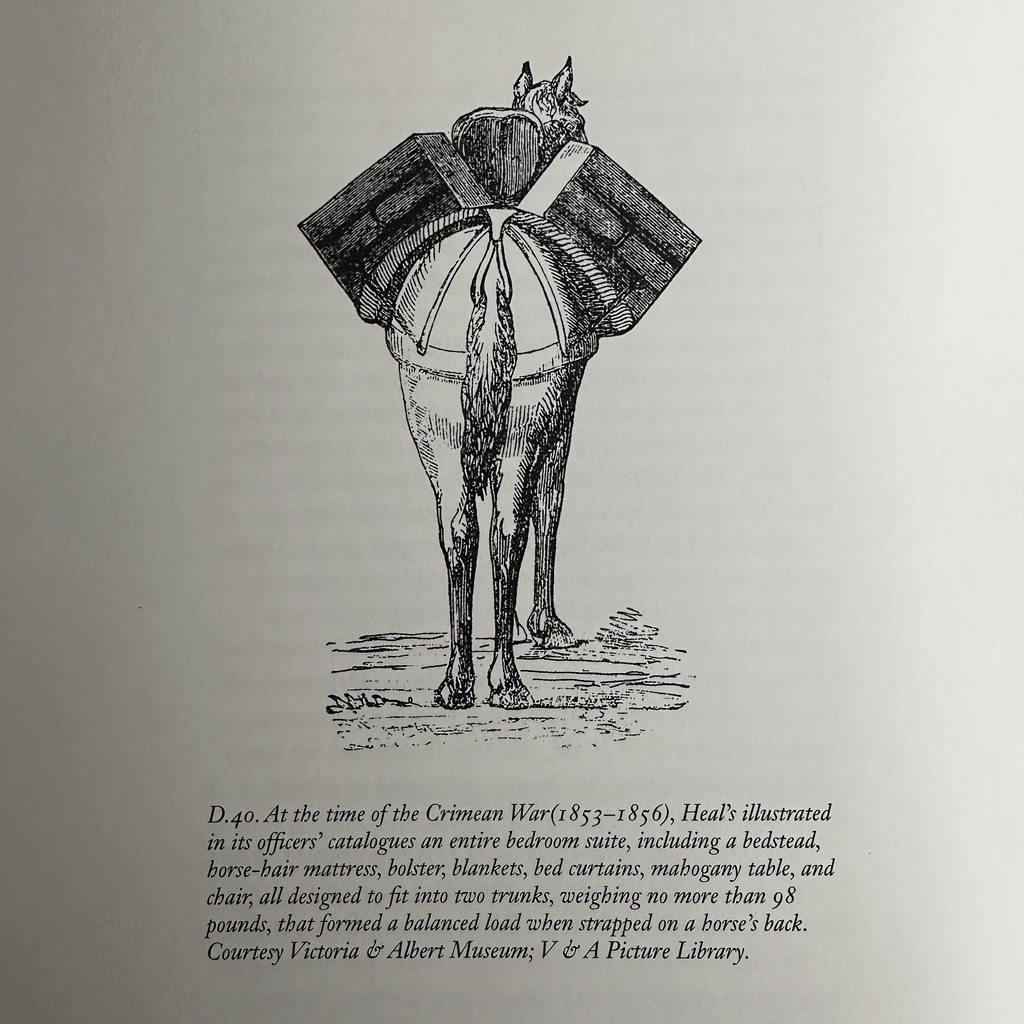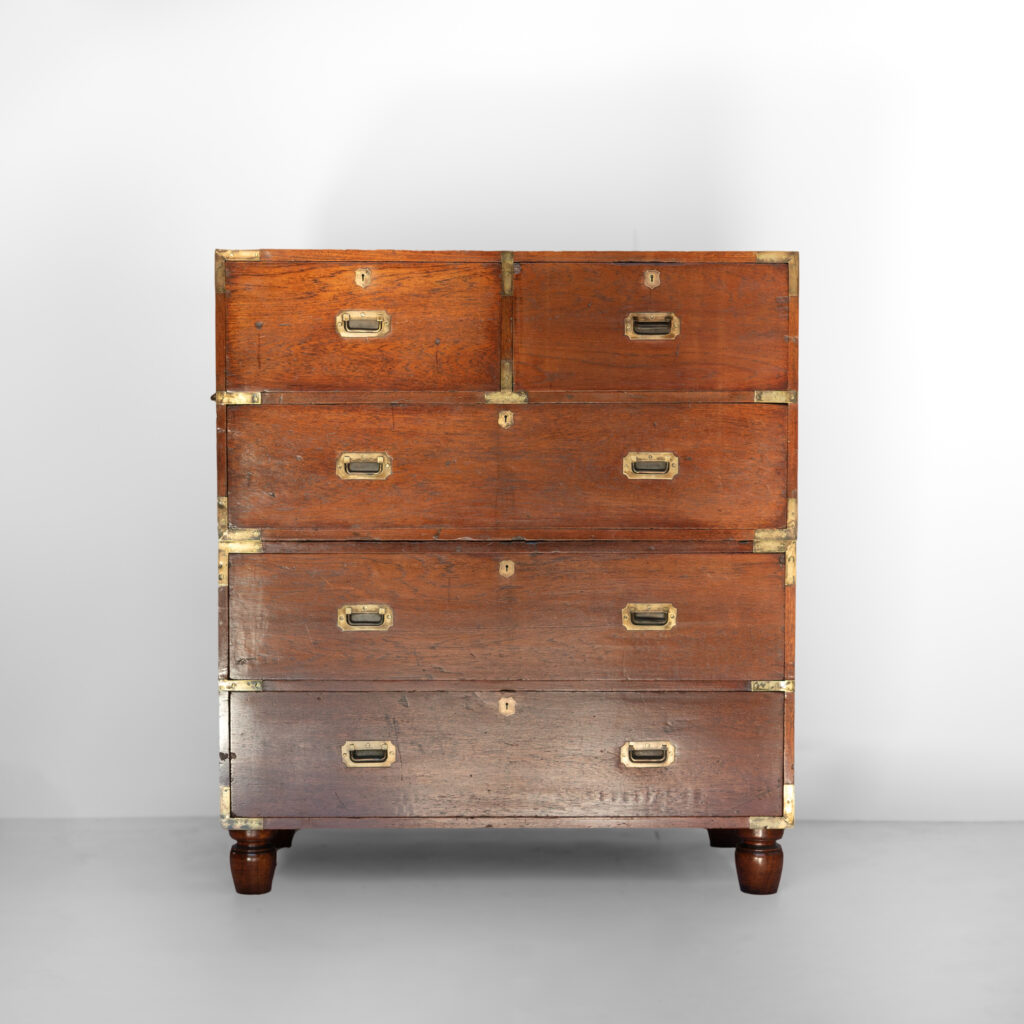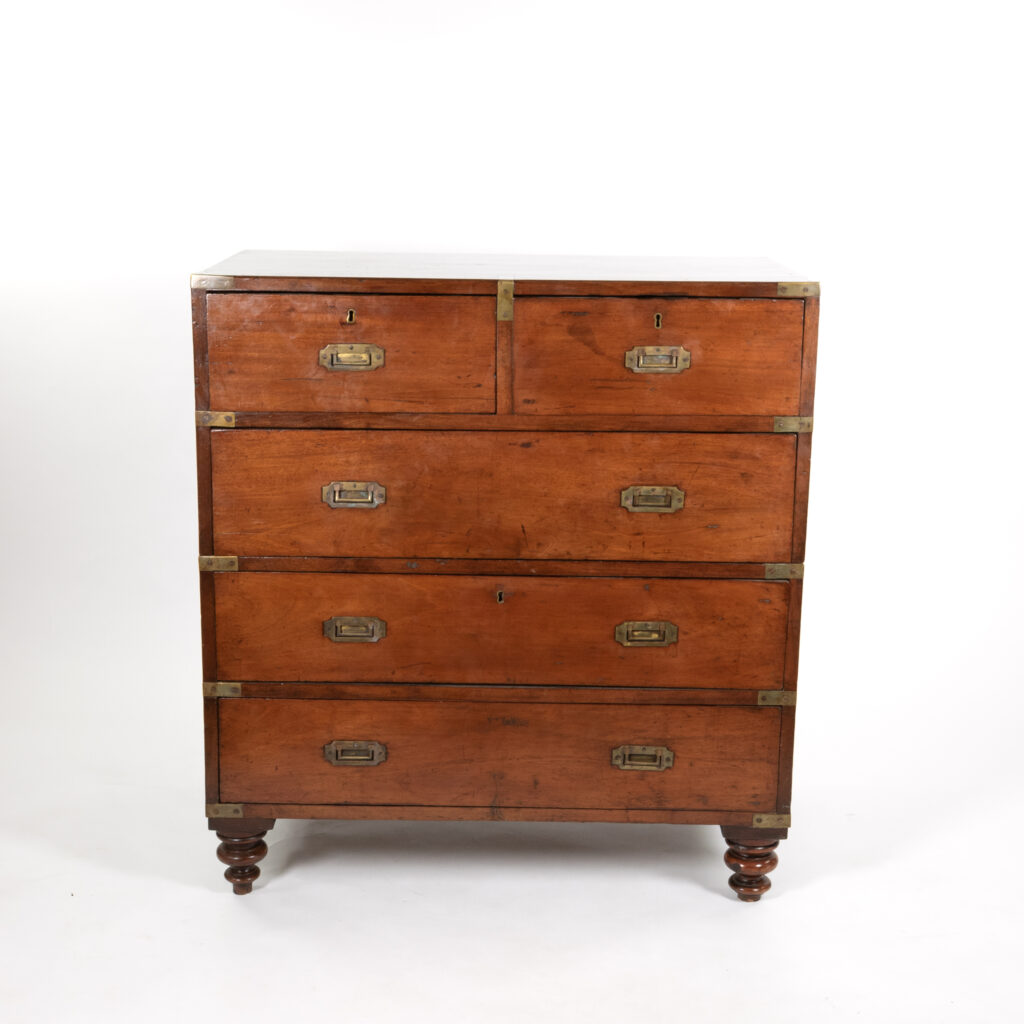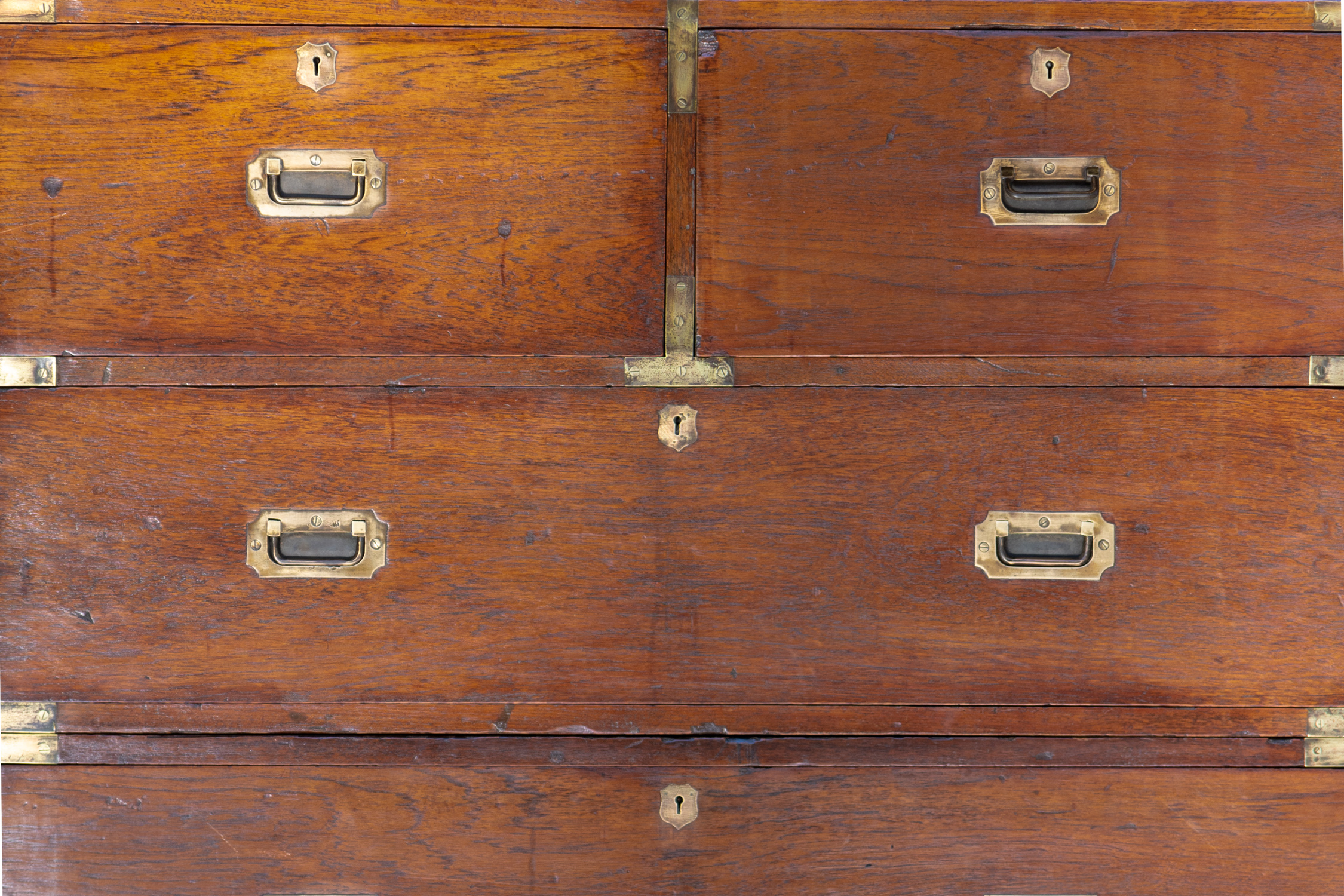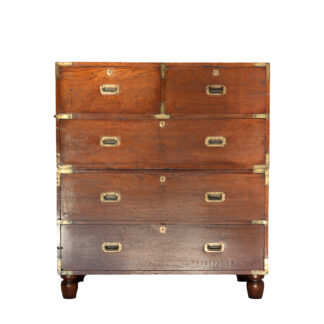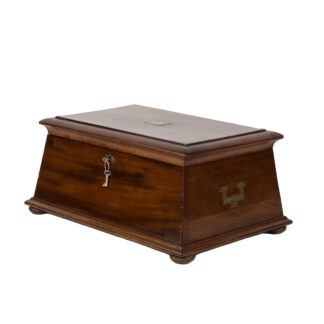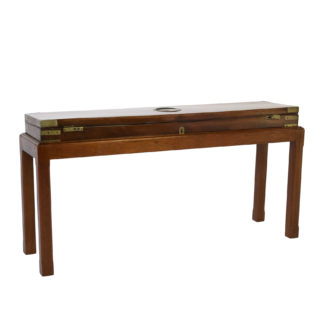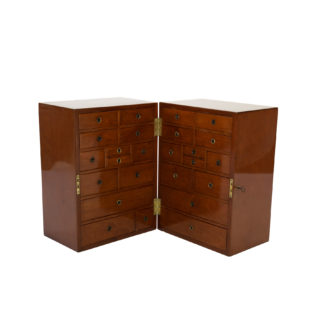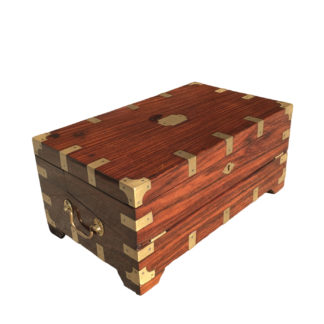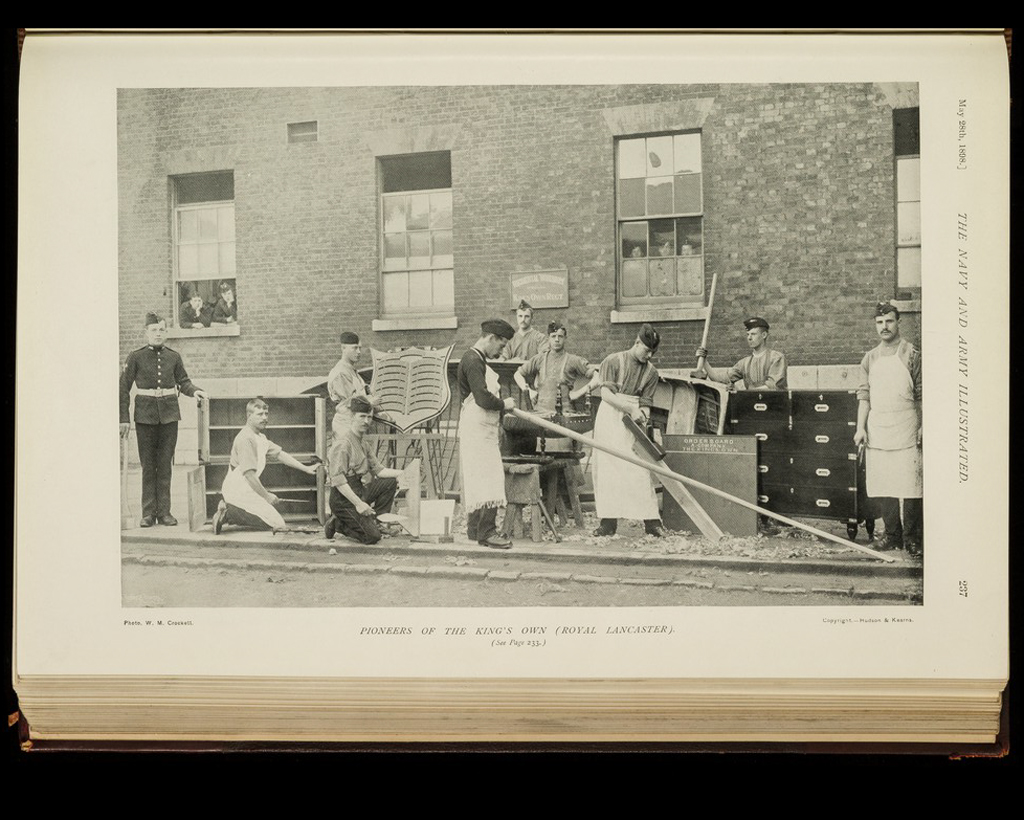
Excerpted from British Campaign Furniture. Elegance under Canvas, 1740-1914, Nicholas
A. Brawer 1
Photo: Pioneers of the King’s Own (Royal Lancaster) Regiment, with their campaign furniture, 1898. Black and white photograph reproduced in The Army and Navy Illustrated, May 28, 1898, p. 237. 2
This fascinating image shows men of the Royal Lancaster Regiment making their own campaign furniture. Of particular interest are the two campaign chests on the far left and far right of the picture.
From the Georgian through the Edwardian periods, gentlemen-officers lavished time and money on both their full dress uniforms and their campaign furniture. In 1813, Charles James, author of The Regimental Companion, wrote, “It is expected from the soldier, that his arms and accoutrements [including furniture] are at all times in the highest order, that they be not only clean but highly polished.” Officers were expected to outfit themselves in style.
The vast majority of campaign furniture was purchased privately. Desks, chairs, beds, game tables, and other luxuries of travel were manufactured for any person of means-civilian, naval, or military-who had need of it while traveling. Few, if any, of these pieces were supplied by the British Board of Ordnance; these rarities would have been marked with the initials BO or (after 1856) WD, for War Department, and accompanied by the Broad Arrow stamp.
Occasionally the army recommended certain models and manufacturers of campaign furniture, as it did in The Report of the Kabul Committee on Equipment (Calcutta, 1882; p.22):
.. the committee now considers the question of camp furniture for officers. The majority of the committee consider it to be necessary for the comfort of an officer, that be should bave a bed, and they find that the pattern… made by Ro of Dublin is the most suitable. It weighs under 20 Ibs…. They also consider that each officer should have a chair, and they recommend the pattern shown in the sketch… which weighs 3 ls…. They also consider a table … for each officer is necessary. These for all officers should be of one uniform size and pattern, viz. 24″ x 18″ x 30″. Trestle legs, joined by a cross bar which is connected by a leather thong to a D riveted in centre of table. These tables being joined together make an excellent mess table….
Brass-bound military chests were among the most popular pieces of campaign furniture for both colonists and military officers in the late eighteenth and nineteenth centuries. These chests, which were often contained within their own wooden packing cases, split into two sections of equal size for ease of storage and transportation. For example, the two halves of a chest formed a balanced load when hung over a mule’s back . Campaign furniture strapped to a pack horse’s back. c. 1853-6They were used both on the outward sea voyage, forming a necessary part of the traveler’s cabin furniture, as well as on land upon arrival, where they served as a chest of drawers in a tent or bungalow.
Examples of a mid-Victorian campaign chests at Garden Court Antiques.
- Handsome Mahogany Campaign Chest On Chest, Circa 1850
- Handsome Mahogany Campaign Chest On Chest, English Circa 1850.
^jh
Further readings and sources:
- British Campaign Furniture. Elegance under Canvas, 1740-1914, Nicholas
A. Brawer, ©2001 P. 59-60 & P. 182 See: https://nicholasbrawer.com/british_campaign_furniture_book.html
Amazon ↩ - Navy and Army Illustrated: bound copies Date: Mar 1898 – Sep 1898 Reference: RAMC/2093/4 Part of: Royal Army Medical Corps Muniments Collection, May 28, 1898, P. 237. ↩

